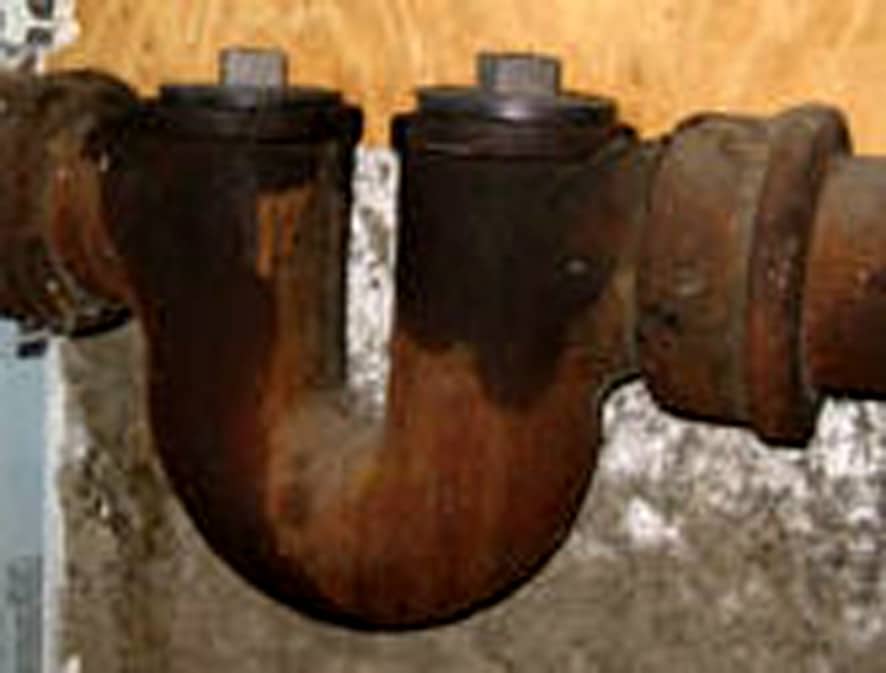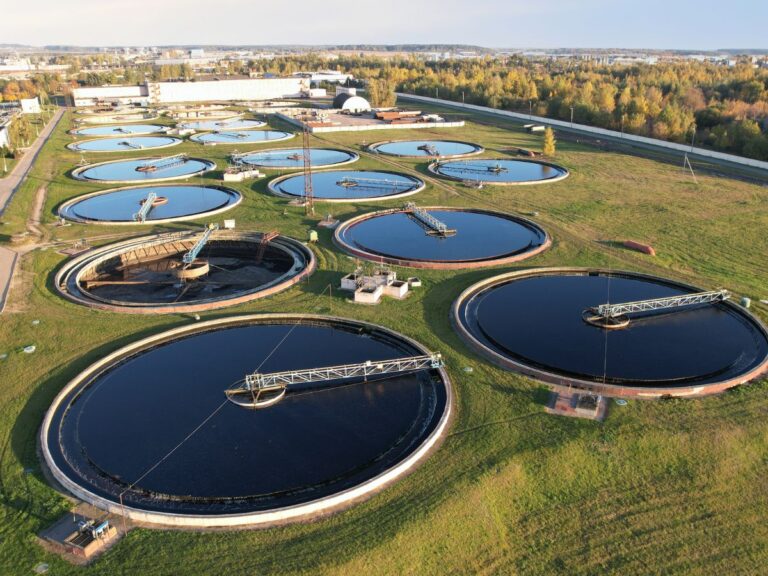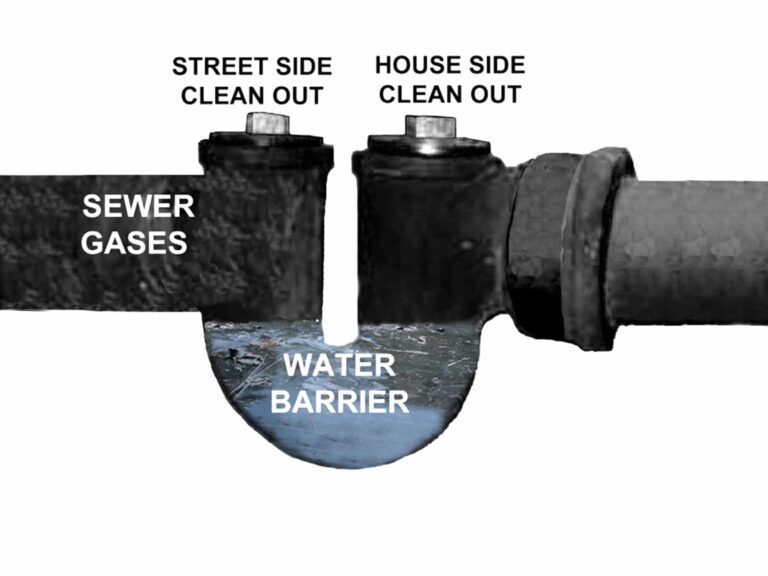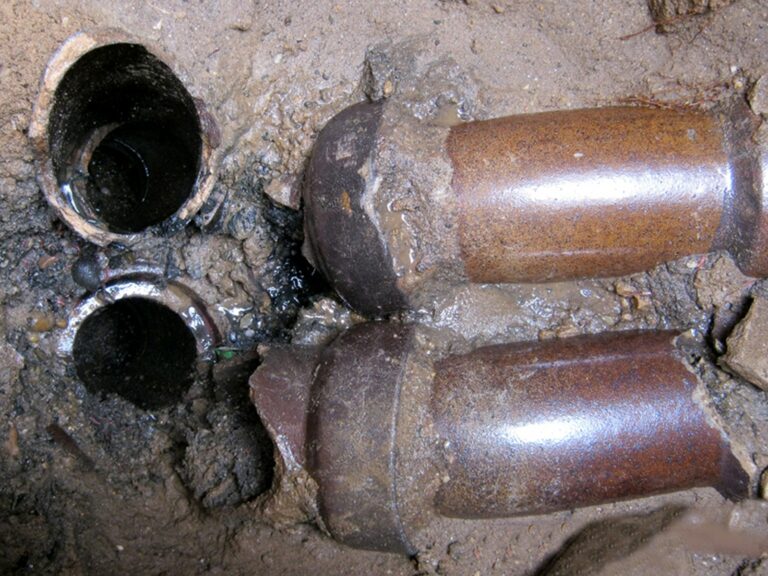What makes a sewer work – NYC Sewers and House Sewer Lines Explained
A house sewer for a property works on gravity, the principal that water runs downhill. As a matter of fact a pressurized house sewer is not legal in New York City unless there is prior approval from the NYC DEP due to very special circumstances existing.
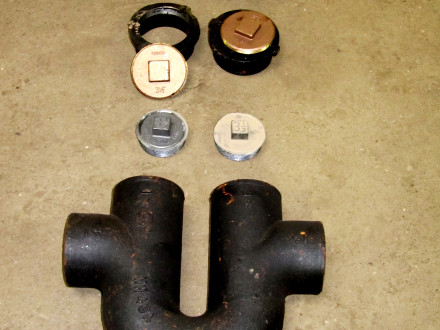
A house drain line is typically installed using extra heavy cast iron soil pipe and should have a minimum of 1/4″ of pitch for every 1′ of run of pipe. The pitch of a drain line is also limited to no more than 1′ of pitch for every 4′ of run of pipe. A house sewer line connects to the NYC public drain system typically in the roadway and at a point above the flow line inside the public drain system. A typical house sewer line is 4″ in diameter from the house to the property line, then 6″ from the property line to the city sewer connection. Commercial properties require 6″ extra heavy cast iron sewer pipe for the entire run of the line. In Manhattan most house sewers are 8″ in diameter, some are even larger. An 8″ sewer pipe actually requires less pitch, as do larger diameter pipes. [Read more about pitch on sewer pipe]
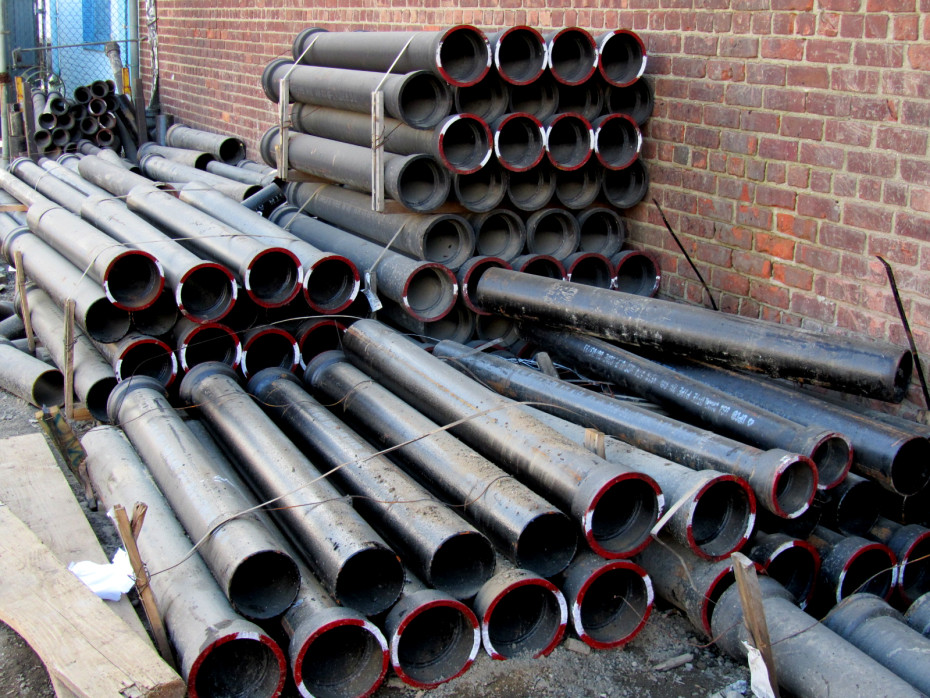
Installing a larger diameter sewer pipe than what is required has no benefit and as a matter of fact will actually slow the flow of water in the sewer pipe itself. Because no mechanical device such as a pump is required for a house sewer line to function properly a house drain should work without any maintenance whatsoever for well over 50 years. Routine cleaning or treatment is not required unless a sewer line has some sort of defect or is being misused. Domestically produced extra heavy cast iron sewer pipe has routinely tested out to be superior to many imported products and is the material of choice for many knowledgeable professionals.
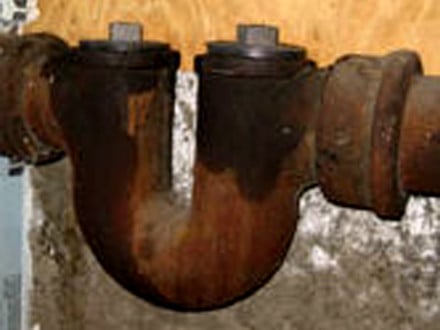
Because a sewer line in New York City is required by code to have a double vent house trap, large or unsuitable objects placed in a house drain are usually caught before they can cause a blockage in a house sewer or a problem in the public sewer system itself. Some municipalities outside of NYC do not require a sewer trap and use a clean-out tee or wye instead. A double vent house trap also creates a water barrier in the bottom of the trap to prevent foul sewer gases from entering into a property.
It is important that the sewer trap have two tightly fitting plugs or caps to prevent leakage of waste or gases into the building. In some cases where the public sewer system tends to back up during heavy rains a backwater valve (also known as a sewer check valve) is recommended. Installing a sewer check valve in some cases can save thousands of dollars in damage when a city sewer backs up through a house drain and damages a basement. There are various different types of backwater valves available – it is advisable that a licensed plumber decide which one, if any, are appropriate for your particular situation.
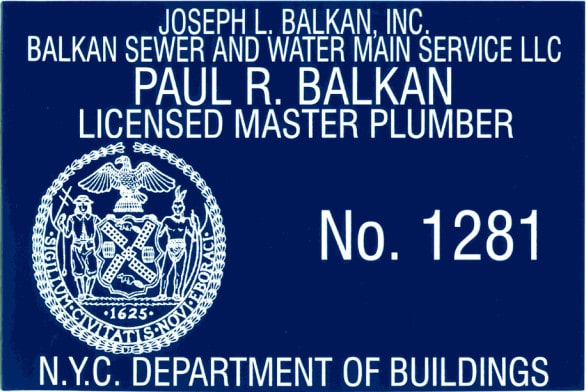 All sewer line work in NYC must be performed by a licensed master plumber. NYC DEP permits are required and typically NYC DOT permits are required as well. All NYC sewer work must be inspected by a NYC DEP inspector prior to backfill of the excavations and signed off. In some cases a NYC DOT representative is also present to monitor the backfill and compaction of the excavations. Additional helpful information is available on the Resources Page located on this web site.
All sewer line work in NYC must be performed by a licensed master plumber. NYC DEP permits are required and typically NYC DOT permits are required as well. All NYC sewer work must be inspected by a NYC DEP inspector prior to backfill of the excavations and signed off. In some cases a NYC DOT representative is also present to monitor the backfill and compaction of the excavations. Additional helpful information is available on the Resources Page located on this web site.

